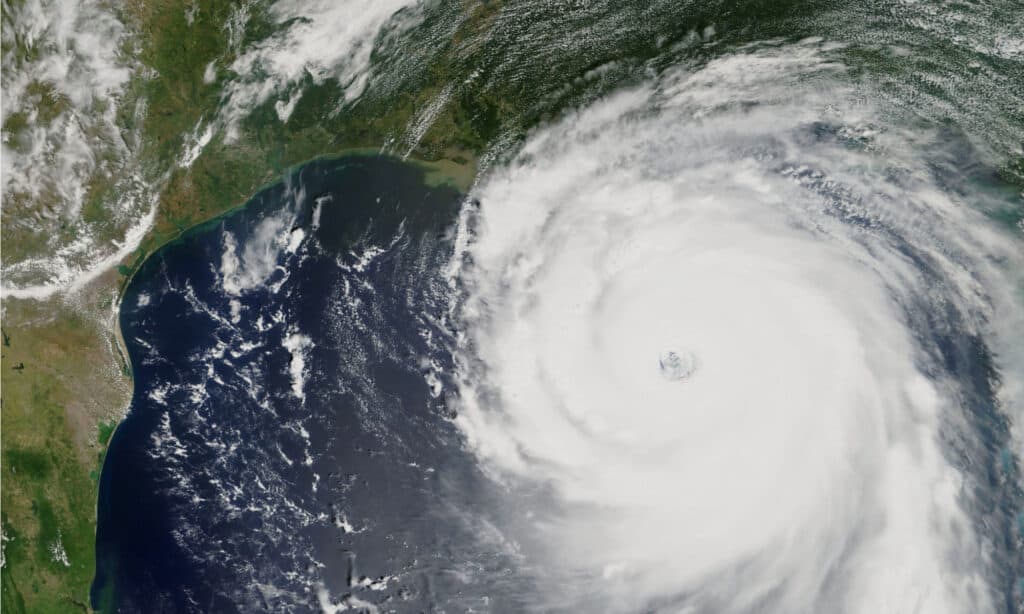Rivers flow in one direction, and this is an immutable fact. Why has the Mississippi River flowed backward more than once in recent memory if that’s the case? In fact, it flowed backward for a full 24 hours in 2012, thanks to Hurricane Issac. There are two more times that the river flowed backward as well.
The Mississippi River has a long and robust history. It is one of the most impressive and vital rivers in United States record. Even animals understand its uses; it is one of the landmarks 40% of the countries birds follow during migration.
This river extends the length of the country, from Louisiana all the way to its beginnings in Minnesota. The Mississippi watershed extends even further, to Montana in the west and New York in the east. Trade was made along its banks, and the waterway was used for exploration when white settlers first arrived.
This river helps irrigate 78 percent of the soybeans and grains needed in the world. That’s a lot of responsibility for one body of water, but it gets the job done.
The second-longest river in the United States, the Mississippi River flows south across the continental interior and is home to more than 260 different species of fish. Looking at its total system, the Mississippi extends more than 3,700 miles across the country and is the 4th longest river system in the world.
Believe it or not, forces of nature can compel this river to combat its nature and flow in the opposite direction. It seems almost unimaginable, yet it has been recorded as happening multiple times.
When the Mississippi Flowed Backward for 24 Hours

Due to Hurricane Issac, the Mississippi River flowed backward for 24 hours in 2012.
©iStock.com/Willard
Thanks to the power of Hurricane Issac, the Mississippi River flowed backward for 24 hours in August of 2012. This was completely unprecedented at the time, especially for such an extended period.
A hurricane is a massive storm that rotates and slowly gains strength over time. The force of the rotating winds and extreme weather conditions of Hurricane Issac caused the river to move water insanely fast in the wrong direction. The pull of the wind was far too much for the Mississippi River to handle.
The normal flow of the Mississippi River is 3,540 cubic meters per second going south. Due to Hurricane Issac, it flowed a whopping 5,200 cubic meters north instead, with the waters surging more than ten feet above their average level.
This left a series of destruction behind, flooding the banks of the river and local areas and spreading water out in a wake of ruin.
People in the path of this hurricane had to be terrified. The event showcased the strength of a hurricane in a way that has only been seen a few times before. Hurricanes are known for being massively damaging, with winds upwards of 80mph (and sometimes much higher!) bashing against homes and landmarks.
The rain is so intense and heavy that it causes rivers to overflow their banks and oceans to crash apart seawalls. A hurricane can bury whole cities in storm surges and massive deluges of rain, and there’s no way to predict what hurricane will decide to commit to its show of force until it is bearing down upon us.
Hurricanes have an intense history within the United States, and every summer, the eastern part of the country lives in fear that one will strike. Many tropical storms develop and even form into hurricanes, but very few end up touching land and causing significant damage.
Other Times the Mississippi River Flowed Backwards

The Mississippi River has flowed backward two other times.
©iStock.com/Kruck20
The Mississippi River is one of the strongest and most well-known rivers globally, so for it to reverse course is genuinely something that feels like once in a lifetime, but it isn’t. The first recorded time that the Mississippi River flowed backward was in 1811-1812.
New Madrid Fault in 1812
More than 200 years ago the Mississippi River waters spun in a reverse course for three days, also due to a natural disaster, but not a hurricane. Instead, this was caused by a massive earthquake in the New Madrid seismic zone reaching down into the Mississippi River. Yes, you read that correctly; an earthquake affected the Mississippi River and its flow.
The New Madrid Fault is a fault line that extends through Arkansas, Kentucky, Missouri, and Tennessee. A fault line is a crack deep within the earth that can potentially cause issues like earthquakes and other seismic activity.
Three earthquakes occurred between December 1811 and February 1812, which caused shifts in the earth, affecting the river. The earthquakes ranged from six to almost nine on the Richter scale, which means they were incredibly powerful.
The thrust from the fault lurching forward in the earthquakes caused a dam to form quite a few feet high where the river flowed through New Madrid. The waters immediately backed up and flowed outward before reversing. Apparently, the fault itself crossed the river many times, making the dam extra strong.
Water flowing backward was due to a phenomenon known as fluvial tsunami. A fluvial tsunami is when the pressure and force of the dam and earthquake pushed the river back whence it came.
Usually, rivers only flow out and backward long enough for the river to find a new way around the dam, but this took three days to happen. The fluvial tsunami was immensely destructive as it tore a path back up its trail.
Hurricane Katrina in 2005

Hurricane Katrina pushed the Mississippi River north in 2005.
©lavizzara/Shutterstock.com
The devastation left behind by Hurricane Katrina was astronomical, and one of the effects it had was to reverse the Mississippi River. It was for a short period of time, but the hurricane’s force pushed it back, just like with Hurricane Issac.
Hurricane Ida in 2021
Hurricane Ida was yet another hurricane that struck the United States. In August 2021, it flowed backward for 3.5 hours and rose at least 17 feet above its normal levels.
The Mississippi River is old with mighty strength, but even it can’t stand up to the force of natural disasters. It makes you wonder what might happen in the future to cause the Mississippi River to overrun its banks and flow in reverse yet again.
The photo featured at the top of this post is © Akarat Phasura/Shutterstock.com
Thank you for reading! Have some feedback for us? Contact the AZ Animals editorial team.






